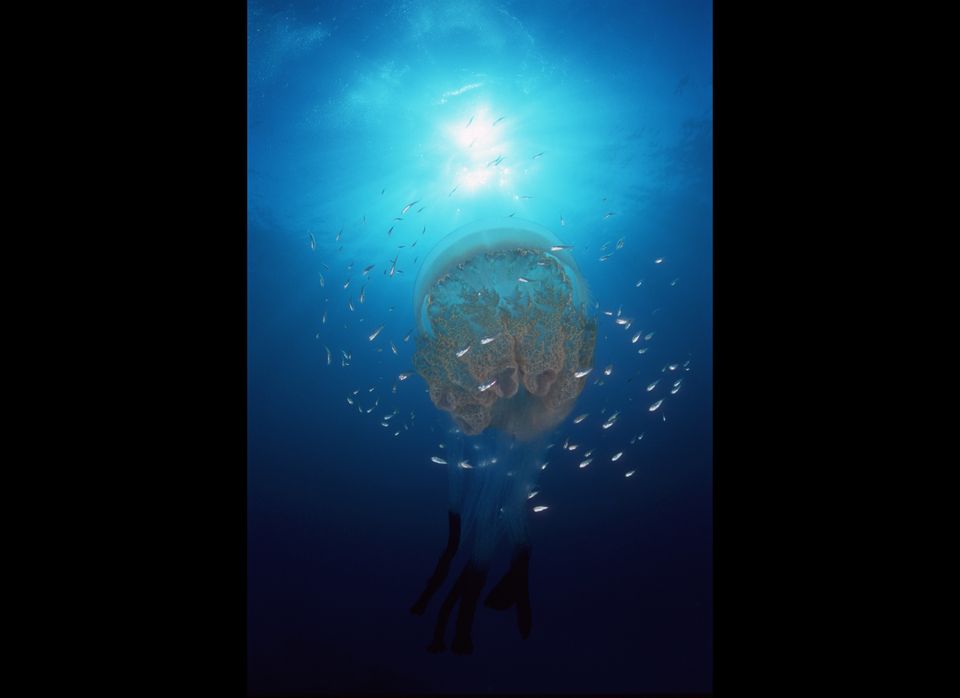
These deep-sea jellyfish might seem like special effects from the latest sci-fi blockbuster, but they're real.
Espen Rekdal, a Norwegian photographer who specializes in capturing the lives of undersea creatures, dove into the frigid waters of the Scandinavian fjords to capture a rare glimpse of these light-sensitive invertebrates, also known as Hydromedusae.
While they are found in very deep waters around the world, these fantastically shaped jellyfish, which range from a less than one inch to several feet in diameter, swarm to the surface by the hundreds to feed at night in a few Norwegian fjords, Rekdal told the Daily Mail.
SCROLL DOWN FOR PHOTOS
"Hydromedusae occur in nutrient rich waters along the outer coasts, fjords and estuaries of northern Europe," Rekdal wrote in an e-mail to The Huffington Post. "They first appear in large numbers during the onset of spring plankton blooms, and during summer the type of species present changes."
While Rekdal's photographs are astounding, others have also braved the icy depths of Norway's fjords in search of elusive jellies. Photographer Lasse Iversen shot photos of helmet jellies in Lurefjorden in 2009. On his website, he described the experience as "like diving with aliens."
For these pictures, Rekdal used a Nikon SLR camera housed in special waterproof casing, and special lighting rigs that illuminated the jellies from different angles. Rekdal said the special lighting was "imperative in creating the 'inner glow' of translucent animals."
But crucial as lighting may be, Rekdal also told the Daily Mail that the creatures' sensitivity to light can pose quite a challenge. "Light use is kept to a minimum as the jellyfish quickly react to the light and seek refuge in deeper water," he said.
Some of the jellies even produce their own light. Rekdal said that bioluminescence is an especially common trait among smaller hydromedusae.
According to Rekdal, the jellies are more abundant in cold, plankton-rich waters. While it was difficult to get an exact count of the number of species he saw ("...some species are very difficult to tell apart," he wrote), Rekdal estimates that he saw about 30 different species of jellyfish during his recent journeys in the fjords.
LOOK: Norwegian Deep-Sea Jellyfish:

